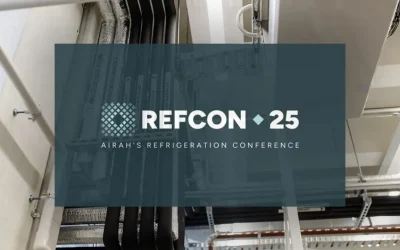
From the Australian Newspaper 04/01/24
A key Labor initiative to train the next generation of clean-energy technicians has filled less than one out of every five available spaces, amid a workforce shortage that threatens to derail the nation’s transition to renewables.
Skills Minister Brendan O’Connor has launched a plea for women to enter technical trades to fill the skills gap, declaring the worker shortage made it unacceptable on “equity and economic grounds” that the trades continued to be male-dominated.
The New Energy Apprenticeships Program, which offered support to 10,000 apprentices in the clean-energy sector in occupations on the skills priority list has only attracted 1787 participants almost a year since it was launched.
“We need more technically trained people in the energy sector than we have,” Mr O’Connor said.
As the Albanese government ramps up support for renewables projects and pushes to remove fossil fuels from the grid to meet its emission reduction target of 43 per cent below 2005 levels by 2030, Mr O’Connor has called on those starting out in the sector to join the scheme to “catch up”.
The program went live on January 1 last year to support the “army of skilled workers” required to meet emissions targets. The government invested $95.6m over nine years to support 10,000 new energy apprenticeships.
The Electrical Trades Union has warned that the sector needs an additional 32,000 electricians to help rewire the nation by 2030 or an extra 20,000 apprentices a year for the next three years based on current completion rates.
ETU divisional secretary Michael Wright said increasing the number of apprentices – including more women – was “fundamental to delivering the energy transition”. “If we don’t create these opportunities, we are either going to jeopardise the energy transition, it’s going to lead to non-licensed work being performed which is going to put people at risk,” Mr Wright said.
“When we see all the challenges facing getting the job done – whether its supply chain, whether it’s development applications – workforce is starting to loom largest as the single biggest risk.”
Labor’s pre-election climate modelling predicted transforming the electricity sector to 82 per cent renewables by 2030 would create 435,000 jobs. But a Jobs and Skills Australia report released last year warned that a lack of workers could put the government’s climate goals at risk.
“If we don’t fine tune our workforce pipelines, skill shortages could prevent us from reaching net zero by 2050,” the report said.
In an interview about the challenges facing the skills sector this year, Mr O’Connor called on Australians entering the labour market to look to vocational education qualifications, arguing they were on par with attaining a university degree.
The Skills Minister said the proportion of women in the energy sector was “absolutely woeful” and the industry could no longer afford to lock out half of its potential workforce, considering the skills shortage.
“There’s some very good efforts to date encouraging more women to become electricians but we’ve got a long way to go,” Mr O’Connor said.
“We need to shift and change the culture of the sector to make sure women feel welcome and encouraged and supported to enter into this area.
“Firstly it’s the right thing to do on equity grounds, but it’s critical on economic grounds.
“We do not have the luxury, we can no longer enjoy this idea that half the population can take a particular occupation that’s very much in demand and the other half of the population will be locked out.”
Fourth-year electrical apprentice Raven Maris, who works in the rail sector and is the ETU’s national women’s officer, said she had found the trade to be a “financially freeing and liberating” career path.
“I will have a skill set that I can fall back on no matter what, and a guaranteed income,” Ms Maris said. “And with the amount of work that the Australian government has funded over the next 10 or 15 years, as we move into renewables, there will be an endless supply of really high-quality, good-paying jobs in the future for a lot of people.”
The government’s revamp of the migration system announced last month sparked criticism from the building and manufacturing sectors after blocking overseas tradies from coming to Australia on the fast-tracked specialist skills pathway.
Home Affairs Minister Clare O’Neil said that the government “feels strongly that for sectors like trades, you should have to prove that there is a skill shortage before you start to recruit overseas”.
Mr O’Connor said he would resort to importing workers with the necessary skills if they were not being trained domestically through targeted skilled migration. “My focus is to make sure that we are supplying the skills to market by educating and training people in this country,” Mr O’Connor said.
“But if there’s any shortfall of something that’s absolutely critical, then we’ll obviously have to ensure that that’s supplemented by skilled migration, and that’s why it’s never been a binary choice. It’s the combination: my priority is to educate and train Australians to fill jobs in the labour market, but also support that is supplemented by skilled migration if there’s a need.”
Mr O’Connor said balancing training locals and importing workers in areas of skills shortages was essential to taming inflation and tackling cost of living. “I think you’ll see that supply of skills, both domestically and through skilled migration, to be very effective in producing an efficient and productive labour market,” he said.
“That is: the more skilled and the more knowledgeable your workforce in a country (is), that actually reduces costs on goods and services. So the best thing I can do to bring down inflation over time, is to help bring about a more knowledgeable and skilled workforce because that brings prices down whether it’s the delivery of services or the delivery of goods.”
Mr O’Connor warned that apprentice completion rates were too low, and he was examining how to bring them up.
“Taxpayers’ investment in education training is important but there’s no point in increasing enrolments and not fixing the completion rate,” he said.
Mr O’Connor said his goal was to elevate the perception of the VET sector, urging Australians that it was on par with universities when it came to placing workers into fulfilling and secure jobs. “If you want to convince people of being an equal pathway to the labour market and to a fulfilling career, you need only look at the statistics that nine out of 10 (jobs) required tertiary education and training – of that 50 per cent are coming from the VET sector,” he said.
“It is already demonstrably clear that the VET sector provides half the skills to the labour market to industry, to businesses, to workers and I think frankly that’s not always understood.”



